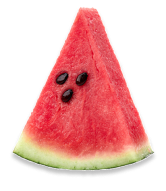Understanding the Differences Between Kava and Kratom
When it comes to natural substances that have gained popularity for their various uses around the world, Kava and Kratom are two names that often come up in discussions. While both have been used for centuries in their native lands for cultural, recreational, and ceremonial purposes, they are distinct in their origins, effects, and legal status in various parts of the world. In this article, we'll delve into the differences between Kava and Kratom, exploring their backgrounds, uses, and how they are perceived and regulated globally.
Origins and Botanical Background
Kava, scientifically known as Piper methysticum, is a crop native to the South Pacific islands. It is primarily cultivated in countries like Fiji, Samoa, and Vanuatu. The plant's roots are used to produce a traditional beverage known for its sedative and anesthetic properties. Kava drink has been an integral part of social ceremonies and rituals in Pacific Island cultures for centuries.
Kratom, on the other hand, comes from the Mitragyna speciosa tree, indigenous to Southeast Asia, particularly in countries like Thailand, Malaysia, and Indonesia. The leaves of the Kratom tree contain compounds that promotes vitality, supports clarity, and well-being. These leaves are traditionally chewed, brewed into tea, or processed into powders, capsules, or even a Kratom drink for convenient consumption.
Chemical Composition and Effects
The primary active ingredients in Kava are called kavalactones. These compounds are known to produce effects that give an overall sense of well-being, without impairing cognitive functions significantly. The experience of consuming Kava is often described as calming and soothing, making it a popular choice for social relaxation without the use of alcohol.
Kratom contains alkaloids, notably mitragynine and 7-hydroxymitragynine, which can have a wide range of effects depending on the serving size. At lower servings, Kratom acts as a pick me up, offering a sense of well-being. At higher servings, it can help manage other discomforts. The versatility of Kratom's effects makes it unique but also contributes to the complexity of its legal and health-related discussions.
Cultural and Traditional Uses
Kava's use in the South Pacific is deeply embedded in the social fabric of many communities. It is traditionally consumed during ceremonies, important gatherings, and as a welcome drink for guests. The ritual of Kava drinking is a communal activity that fosters a sense of belonging and peace among participants.
Kratom's traditional use in Southeast Asia is somewhat different. It has been used by workers in rural areas to combat fatigue and improve productivity during long hours of labor. Additionally, Kratom has been utilized in traditional medicine to treat various ailments, although its therapeutic uses are less ceremonial and more pragmatic compared to Kava. Looking to enjoy a harmonious blend of both kava and kratom? Check out Mitra's kava and kratom shot!
Legal Status and Availability
The legal status of Kava and Kratom varies significantly across the globe due to their differing effects and concerns over potential misuse. Kava has been subject to bans and restrictions in some countries, primarily due to concerns over its potential impact on liver health. However, it remains legal and widely used in many Pacific Island nations and has been making a comeback in other parts of the world, including the United States, where Kava bars have become popular.
Kratom's legal status is more complex and varies widely from one country to another and even within countries, such as the United States, where it is legal at the federal level but banned or restricted in some states. The debate over Kratom's legality centers around its potential for abuse, its effects at higher serving sizes, and its use as a self-treatment.
Conclusion
While Kava and Kratom may share some superficial similarities, including their natural origins and traditional uses, they are fundamentally different in terms of their effects, chemical composition, and the cultural contexts in which they are used. As natural substances, both have carved out their niches in various societies around the world, with communities valuing them for different reasons.
For those interested in exploring the cultural practices and natural substances of different regions, Kava and Kratom offer fascinating insights. However, it's important to approach them with an understanding of their differences, respecting their traditional uses and adhering to the legal frameworks that govern their consumption. As always, when trying any new substance, it's crucial to do so responsibly and with awareness of its potential effects and legal status in your region.
DISCLAIMER: These statements and products presented on this website have not been evaluated by the Food and Drug Administration FDA. The products mentioned on this website are not intended to diagnose, prevent, treat or cure any diseases or health conditions. Therefore any information on this website is presented solely as the opinions of their respective authorswho in which do not claim in any way shape or form to be medical professionals providing medical advice. Mitra-9.com and its owners or employees cannot be held responsible for, and will not be liablefor the inaccuracy or application of any information whatsoever hereinprovided. By purchasing our products you agree that you are aware andin compliance with your local county, state, or federal regulations. Mustbe 21 years or older to purchase Kratom. The US FDA has not approvedkratom as a dietary supplement. We do not ship to the following states,cities and counties in the US where Kratom is banned: Alabama,Arkansas, Indiana, Rhode Island, Vermont, Wisconsin, Sarasota County, FL, Union County, MS, San Diego, CA, Jerseyville, IL, Oceanside, CA, and Ontario, OR. Furthermore, Kratom is also banned in the following countries where shipment cannot be executed: Australia, Burma, Denmark, Finland, Israel, Lithuania, Malaysia, Myanmar, Poland,Romania, South Korea, Sweden, Thailand, United Kingdom, Vietnam.

























































